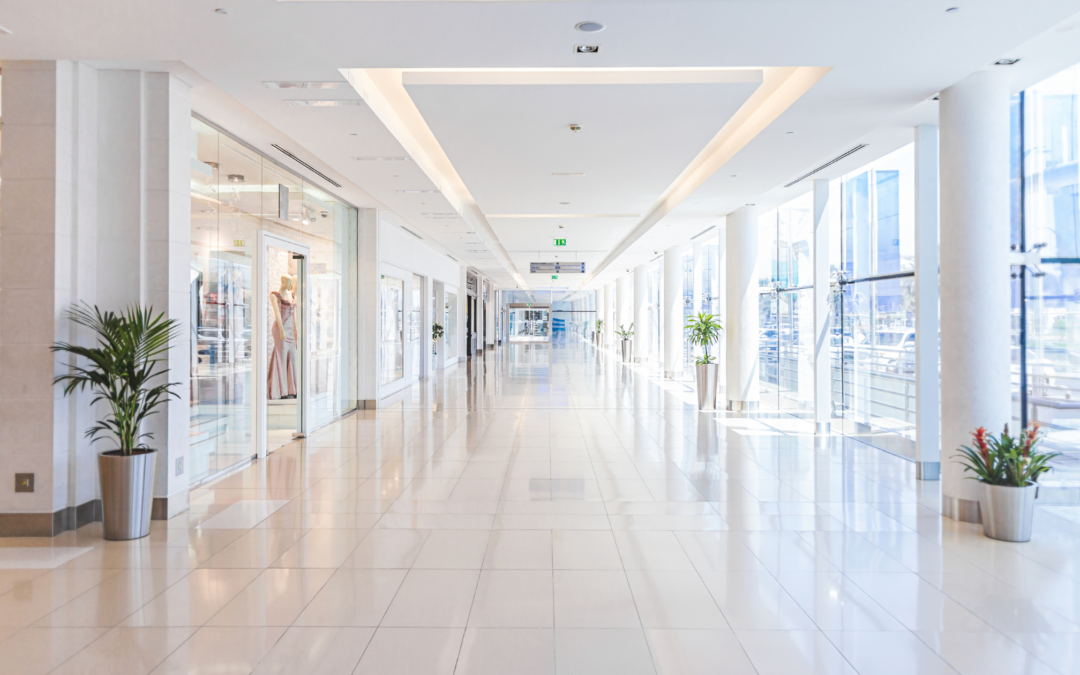A nationwide trend is reshaping the fate of dying retail centers by repurposing them into sprawling healthcare campuses. As traditional malls struggle with declining foot traffic and high vacancy rates, health systems are breathing new life into these sites by converting them into outpatient clinics, medical malls, and specialty care hubs.
Why Malls Make Smart Medical Spaces
Several factors make former malls attractive options for healthcare:
- Location and accessibility: Malls are typically located in high‑traffic zones with ample parking, road visibility, public transit access, and proximity to population centers. These are all ideal for patient access.
- Size and structure: Large, open floor plates with minimal internal columns, plenty of utilities and HVAC capacity, high ceilings, and structural flexibility are well‑suited to medical equipment, exam rooms, X‑ray and RI installations, and outpatient surgery.
- Faster and cheaper setup: Retrofits require less time than ground‑up construction. Because many malls already have zoning clearance and infrastructure, essential permits are faster to secure, often shaving off months of lead time.
Case Studies in Conversion
- One Hundred Oaks Mall in Nashville was repurposed into a medical mall. Vanderbilt University Medical Center occupies the second floor, while the first floor remains retail space. Near-full occupancy demonstrates the model’s success.
- At Exton Square Mall in Pennsylvania, Main Line Health invested $4.5 million to convert 32,000 sq ft into an ambulatory care center featuring advanced MRI suites.
- Blue Hen Mall in Dover, Delaware, has been fully converted into a medical and government services complex. It is now home to Bayhealth outpatient clinics, VA facilities, and state offices.
Drivers Behind The Surge
- Pandemic‑accelerated decline of malls paired with a surge in outpatient care demand has aligned healthcare needs with retail real estate availability.
- Healthcare systems keen to reduce capital costs favor conversions over new builds, especially given rising construction and lending expenses.
- Patients now expect retail‑like convenience in care delivery, including accessible parking, walk‑in clinics, and integrated pharmacies/diagnostics in one location.
Design and Planning Challenges
Converting a retail site to medical use involves hurdles such as:
- Wayfinding and layout: Long corridors and maze‑like interiors require redesign to ensure clarity for patients and staff.
- Utility upgrades: Medical-grade electrical, HVAC, backup generators, plumbing, and sterile air systems often require upgrades in shell structures not initially built for such intensity.
- Envelope/hardware issues: Retail facades and roofs may not meet healthcare moisture and sanitation standards, requiring careful remediation.
Community Impact and Economic Benefits
These conversions bring tangible community uplift:
- Revitalizing underutilized real estate churns out jobs from construction through long‑term facility staffing and stabilizes struggling malls.
- Medical malls serve healthcare‑underserved areas, especially Medium‑ and Class B/C malls in historically disinvested communities that suddenly gain access to primary care, imaging, women’s health, dialysis, and therapy.
At least 32 enclosed U.S. malls have already been transformed, from full medical malls to partial conversions, and their evolution is only accelerating.
Forward‑thinking developers and health systems now envision mixed‑use campuses. This means clinics, wellness gardens, telehealth centers, pharmacies, ancillary retail, and fitness under one roof. This hybrid model reimagines care delivery as community‑centric, convenient, and cost‑effective.
Transforming malls into medical hubs is more than a clever reuse. It’s a strategic evolution that meets real estate pragmatism and a population’s demand for accessible, outpatient‑focused care. As retail continues shrinking and healthcare leans toward convenience and decentralization, these adaptive medical malls offer a promising roadmap for revitalized space, reimagined purpose, and renewed community impact.
For accurate, insight-driven valuations across the healthcare sector, including emerging facility types, Appraisal Economics is here to help!

